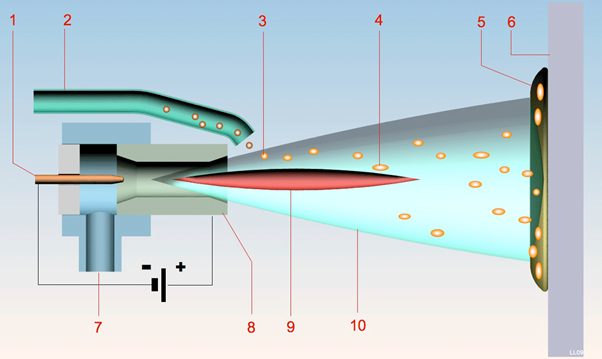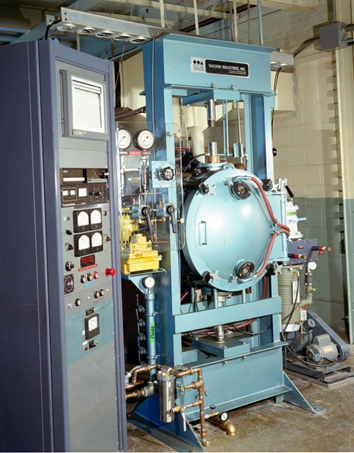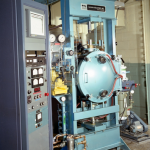Plasma spraying is a popular surface treatment with a wide range of applications. It is a thermal spray coating process, which delivers a high quality covering with a very strong bond, achieved by combining a high temperature from a focused heat source, an inert spraying medium, such as argon, and high particle velocities.

Even in the current testing industrial conditions, plasma spray is a growth part of the surface treatment sector, with 5.8% growth forecast in the period up to 2027. Let’s take a look at some of the benefits and applications of this treatment.
Exploring plasma spraying
A plasma is achieved when a gas has been heated to the temperature at which it ionises, becoming electrically conductive. The temperatures required are in the region of 10,000 to 15,000 degrees Celsius. The temperature will vary depending on the gas used. Plasma spray can be used to cover a massive range of parts with almost any ceramic or metallic material, whilst also keeping the substrate free from distortion.
Benefits of plasma spraying
As intimated above, one of the biggest benefits of plasma spraying is that both large and small components can be sprayed with a huge range of metals or refractory ceramics.
Components treated with plasma spraying are imbued with superior corrosion protection and wear resistance, making them highly appropriate for use in inhospitable environments, or in machines with many moving parts.

Another benefit of plasma spraying is increased clearance control when working with abrasives and abradables. Plasma spraying also provides great resistance against heat and oxidation, whilst simultaneously offering great temperature management. Finally, electrical conductivity or resistivity can be controlled by applying a surface coating using plasma spraying techniques.
Applications
The versatile nature of plasma coatings mean that they are often towards the top of many engineers’ lists as a method to coat components.
Some applications include protecting components against high temperatures and using thermal barrier coatings on parts, such as gas turbine combustion hardware. Printing rolls used for laser engraving could be sprayed with chrome oxide ceramic to provide great wear resistance.
Similarly, spraying molybdenum onto components such as diesel engine piston rings protects against galling, whilst erosion and abrasion protection can be provided on all manner of items such as tools.
What coatings can be used?
Generally speaking, plasma coatings come in four main categories: Ceramic coatings include chrome oxide, zirconium oxide, and aluminium oxide. Abradable coatings include nickel chrome, nickel graphite, and nickel aluminium.
Sometimes carbides such as tungsten carbide and chrome carbide are favoured, whilst pure metals or alloys like nickel, aluminium, and copper molybdenum are also available.
Each of the different coating materials are chosen due to these properties offered, making plasma spraying an incredibly versatile method of protecting and even enhancing components.
When selecting the most appropriate method and materials to treat the surface of your components, it is important to consider carefully how and where these component parts are to be used.


